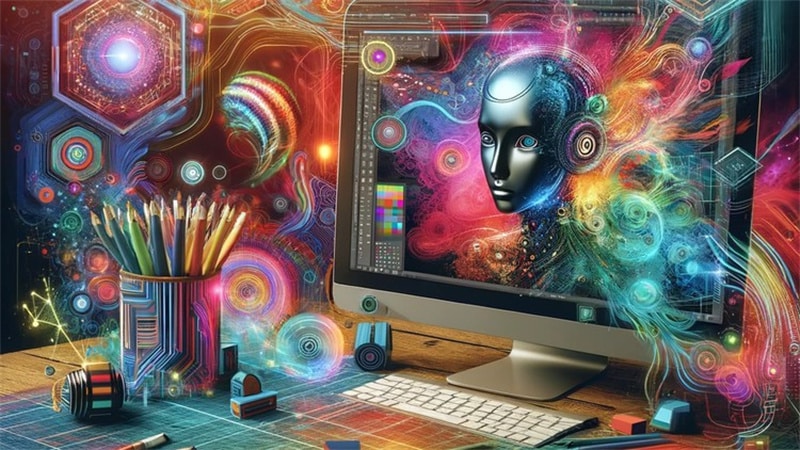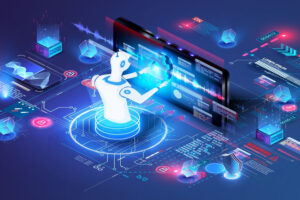In recent years, the realm of gaming has been significantly transformed by technological advancements, with AI for gaming graphics being at the forefront of this evolution. The integration of Artificial Intelligence (AI) into gaming graphics is not only enhancing the visual experience but also optimizing performance, paving the way for a new era of gaming. This article explores how AI is reshaping gaming graphics and what the future holds for gamers and developers alike.

The Rise of AI in Gaming
The gaming industry has always been a fertile ground for technological innovations. With the advent of AI, game developers are now equipped to create more realistic and immersive environments. AI algorithms can process vast amounts of data, allowing for real-time rendering and dynamic graphic adjustments that were previously unimaginable. This has brought about a significant shift in how games are developed and experienced.
AI Algorithms and Real-Time Rendering
Real-time rendering is crucial in creating seamless gaming experiences. By using AI algorithms, developers can automate and refine the rendering process, resulting in smoother and more detailed graphics. AI can predict and pre-render scenes, reducing the workload on graphics processors and enhancing game performance.
Dynamic Graphic Adjustments
One of the most exciting applications of AI in gaming graphics is its ability to make dynamic adjustments based on player interactions. AI can analyze player behavior and modify graphic elements to maintain optimal performance without compromising quality. This adaptability ensures that players enjoy high-quality visuals regardless of the hardware they are using.
Enhancing Visual Quality with AI
AI’s impact on gaming graphics extends beyond performance optimizations. AI-driven technologies are also enhancing the visual quality of games, making them more lifelike and engaging.
Realistic Textures and Lighting
AI algorithms can generate realistic textures and lighting effects, adding depth and realism to game environments. Techniques such as ray tracing, powered by AI, simulate the way light interacts with objects, creating stunningly realistic visuals.
Procedural Content Generation
Procedural content generation is another area where AI is making a significant impact. By using AI, developers can create vast and diverse game worlds without manually designing every element. This not only saves time but also ensures that each player’s experience is unique.
The Role of Machine Learning in Gaming Graphics
Machine learning, a subset of AI, plays a critical role in advancing gaming graphics. Through machine learning models, games can learn and adapt over time, enhancing both graphics and gameplay.
Predictive Analytics for Graphics Optimization
Machine learning enables predictive analytics, allowing games to anticipate and optimize graphics performance. By analyzing past data, machine learning models can predict future graphic demands and allocate resources accordingly, ensuring a smooth gameplay experience.
Adaptive AI in Game Design
Adaptive AI enhances game design by allowing games to adjust their graphics and mechanics based on player preferences and performance. This personalization ensures a more engaging and tailored gaming experience for each player.
Challenges and Future Prospects
While the integration of AI in gaming graphics has brought about remarkable advancements, it also presents challenges that developers must address to fully realize its potential.
Technical Challenges
Integrating AI into gaming graphics requires significant processing power and technical expertise. Developers must find ways to balance graphic quality with performance to ensure that games run smoothly across different platforms.
Ethical Considerations
As with any AI application, ethical considerations must be taken into account. Developers must ensure transparency and fairness in AI-driven graphics to avoid bias and maintain player trust.
Conclusion
The future of gaming graphics is undeniably intertwined with AI. As technology continues to evolve, we can expect even more groundbreaking developments in this field. For game developers and players, the integration of AI offers exciting possibilities for richer, more immersive gaming experiences. For those interested in exploring how AI is transforming other design fields, such as AI for 3D Modeling and AI for Architectural Visualization, there are numerous resources available that showcase the versatility and potential of AI in various creative domains.

FAQs
How does AI improve gaming graphics?
AI improves gaming graphics by optimizing rendering processes, enhancing visual quality, and enabling dynamic adjustments based on player interactions.
What are the challenges of using AI in gaming graphics?
The challenges include technical limitations, such as processing power, and ethical considerations, such as ensuring fairness and transparency in AI-driven graphics.
What is the future of AI in gaming graphics?
The future of AI in gaming graphics is promising, with potential advancements in realism, personalization, and performance optimization, leading to richer gaming experiences.







